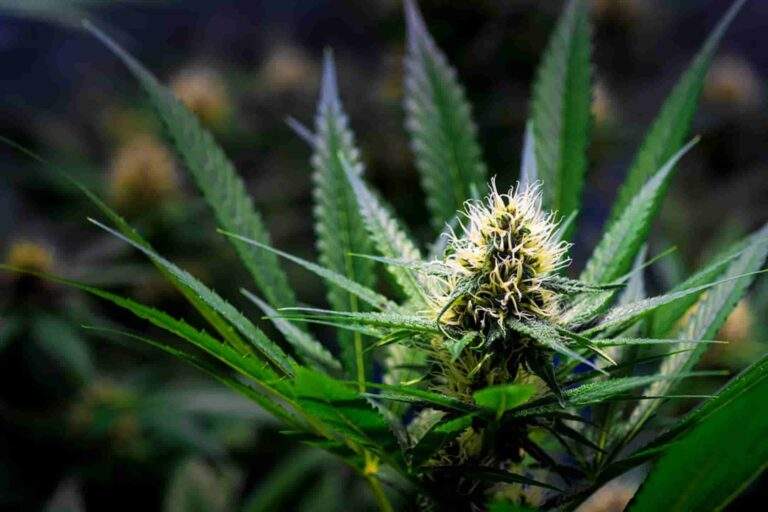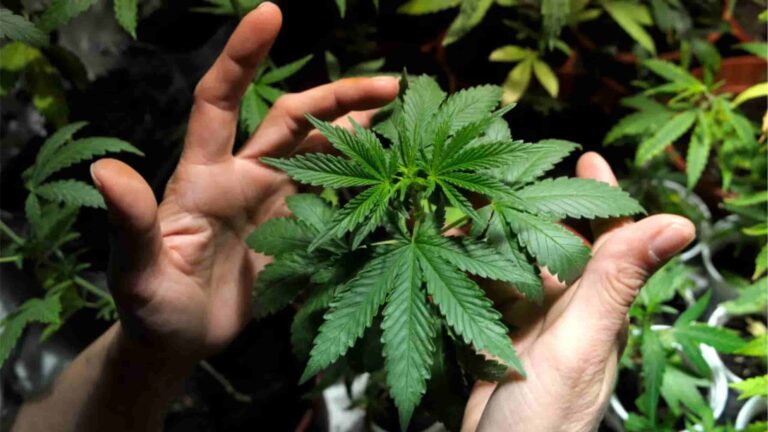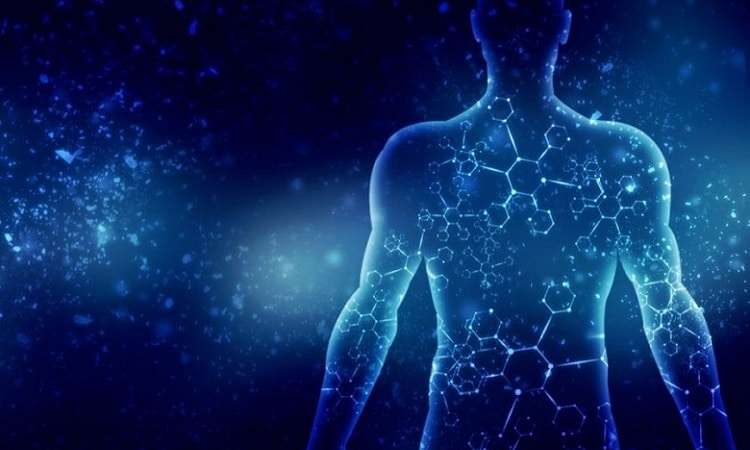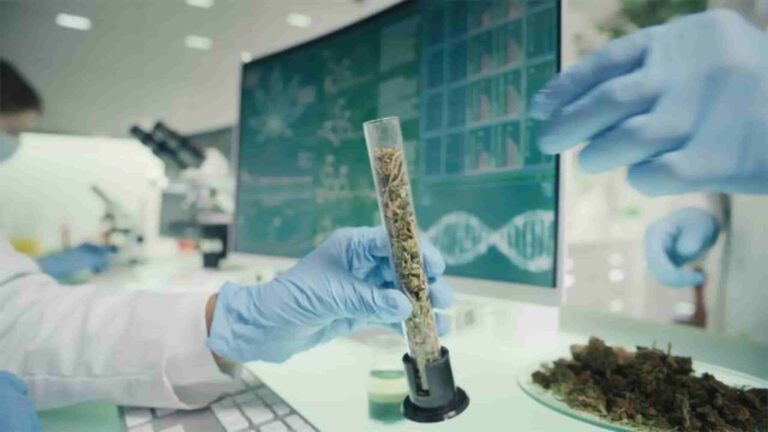Medical MARIJUANA Information
A Comprehensive Guide
Introduction

Welcome to our comprehensive guide on medical marijuana, an exploration into the historical roots, scientific evidence, legal intricacies, and diverse medical applications of this captivating plant. As we unravel the intricate tapestry of this herbal ally, the spotlight shines on the endocannabinoid system – a symphony of receptors and signaling molecules orchestrating balance within the human body. In a world inundated with pharmaceutical complexities, medical cannabis emerges as a beacon of hope, offering a simple, natural approach to health and healing.
Forget preconceived notions; this isn’t a journey into the haze of recreational indulgence but a deliberate exploration of the healing impact that cannabinoids can have on the intricate dance of our physiologic functions. Here we examine the intricate science that illuminates medical marijuana.
This is more than a guide; it’s a revelation, a roadmap to understanding how medical marijuana, properly managed, enhances health and well-being. We invite you to embrace the promise of healing that lies within the heart of the cannabis plant.
A Brief History of Medical Marijuana

Cannabis, with a lineage tracing back to ancient civilizations, has served medicinal purposes throughout history. From ancient Chinese texts referencing its therapeutic qualities to medieval Arab pharmacology recognizing its anti-inflammatory properties, the plant has a rich and varied medical history. Marijuana has also had an interesting and varied intertwining with religious philosophy throughout history. From marginalizing and demonizing cannabis to embracing and celebrating its benefits, religion has expressed various positions.
In the United States, following a period of strict prohibition and stigmatization, we have witnessed a resurgence of interest and acceptance, particularly in the medicinal potential of cannabis, as medical research begins to unravel the significant value of this natural therapy.
Legal Landscape

The current legal status of medical marijuana is a mosaic of complexities that vary between states in the United States. While pioneering states like California and Colorado embraced its medicinal potential early, others maintained a more cautious stance. Some states allow adult recreational use, some do not. Navigating this landscape necessitates an understanding of state-specific laws and regulations. Fortunately, the Commonwealth of Virginia has embraced a compassionate and understanding approach and has a well-developed medical marijuana program. However, the clash between state and federal laws persists here, creating a complex and sometimes contradictory set of rules.
State-by-State Variations
The legal landscape for medical marijuana varies widely across states, shaped by lobbying efforts, scientific evidence, and popular consensus. Staying informed about specific laws is essential. For example, in Colorado, both recreational and medical marijuana are legal, while in states like Alabama, medical marijuana laws are more restrictive. Some states, like South Carolina, still have no tolerance for medical or recreational cannabis. Advocacy efforts and evolving regulations shape the trajectory of marijuana laws at the state level.
Federal versus State Laws
Federal law abides by the Controlled Substances Act of 1970, an antiquated doctrine strictly prohibiting marijuana in all forms. The act currently defines cannabis as a Schedule I drug, prohibiting its use in all forms. The more informed state laws often come into conflict with this position, complicating various legal interpretations. Matters such as interstate travel, employment protection, gun ownership rights, and background checks are frequently impacted by this.
Fortunately, the current federal administration is making good on its promise to evaluate the legal status of cannabis. They have lightened the federal posture on simple possession charges and have directed the FDA to re-evaluate the Scheduling of cannabis based on current scientific evidence. The FDA, in response, has recommended to the DEA that cannabis be rescheduled. Cannabis will likely be re-scheduled or removed from the Act based on these efforts, greatly enhancing legitimate access to the therapy.
Marijuana Laws in Virginia
Virginia has made significant strides in medical marijuana legislation. In 2020, the state decriminalized marijuana possession and allowed for the medical use of cannabis. Virginia’s medical marijuana program permits patients with qualifying conditions to access cannabis products with a doctor’s recommendation. The state-authorized dispensaries offer high-quality safe cannabis products in all forms. Understanding the specifics, such as possession limits and qualifying conditions, ensures compliance and informed usage.
For more information, visit our Comprehensive Guide to Marijuana Laws in Virginia.
Understanding the Plant

Let’s begin our journey into the world of medical marijuana by looking at the plant itself. Understanding the anatomy and makeup of the cannabis plant is akin to deciphering a botanical code that unlocks its therapeutic potential. Let’s embark on a journey into the realm of cannabis strains: Cannabis sativa, Cannabis indica, and the intriguing hybrids that bridge the gap between these two distinct varieties. Understanding the differences between them and how they affect you is key when determining your best therapeutic strategy.
The Cannabis Plant Structure: A Botanical Symphony
Picture a robust plant with a complex structure. At its core are the roots, the silent architects absorbing nutrients from the soil. As the stem rises, it bifurcates into branches that bear lush, serrated leaves. These leaves are the solar panels of the plant, harnessing sunlight for the crucial process of photosynthesis.
Now, enter the heart of the matter – the flowering structures. Known as buds or colas, these clusters of tightly packed flowers harbor the precious compounds sought after for their therapeutic properties. And within these buds lies a microscopic universe – trichomes.
Trichomes: The Jewel-Like Factories of Cannabinoids
Trichomes are the microscopic resin glands that dot the surface of the cannabis plant. To the naked eye, they appear as tiny, crystal-like structures, often giving the plant a glistening appearance. Within these trichomes, a treasure trove of cannabinoids, terpenes, and flavonoids is synthesized.
Cannabinoids, the chemical compounds responsible for the plant’s therapeutic effects, find their genesis within these trichomes. The two primary players are THC (tetrahydrocannabinol) and CBD (cannabidiol). THC induces the euphoric high, while CBD offers therapeutic benefits without the psychoactive effects.
Terpenes, aromatic compounds abundant in various plants, contribute to the distinct flavors and scents of different cannabis strains. Beyond sensory pleasure, terpenes also interact with cannabinoids, enhancing or modulating their effects. For example, myrcene, found in high quantities in indica strains, is known for its sedative properties, contributing to the relaxing effects often associated with Indicas.
Flavonoids, though less well-studied than cannabinoids and terpenes, are thought to have potential health benefits. These compounds, responsible for the colors in the plant, serve both aesthetic and potentially functional roles.
Indica, Sativa, and Hybrid: Unveiling the Characteristics

The cannabis plant has been categorized into two primary subspecies: Cannabis sativa and Cannabis indica. Each exhibits unique characteristics, influencing the overall experience it imparts. Hybrids are a blend between these two main groups. Distinguishing between these strains helps optimize the medical benefits.
Cannabis Sativa: The Energizing Uplifter
Sativa plants are typically tall and lanky, with narrow leaves. Thriving in warmer climates, they boast longer flowering cycles. The effects of sativa strains are often associated with increased energy, creativity, and daytime use. Strains like Sour Diesel exemplify the invigorating qualities of sativa, making them popular choices for individuals seeking a cerebral and uplifting experience.
Cannabis Indica: The Calming Sedative
Indica plants, in contrast, are shorter and bushier with broader leaves. Flourishing in cooler climates, they have shorter flowering cycles. Indica strains are renowned for their calming effects, making them ideal for evening or nighttime use. Granddaddy Purple, with its relaxing and sedative properties, epitomizes the quintessential indica experience, offering relief from insomnia or chronic pain.
Hybrids: The Best of Both Worlds
The third category, hybrids, is a testament to the infinite possibilities within the cannabis genus. Hybrids are crossbreeds of sativa and indica strains, aiming to combine the desirable traits of both. Breeders meticulously select parent strains to create hybrids tailored for specific effects. Blue Dream, a popular sativa-dominant hybrid, marries the uplifting qualities of sativa with the relaxation of indica, offering a balanced experience.
Cannabinoids and The Endocannabinoid System

Cannabinoids and The Endocannabinoid System
The endocannabinoid system (ECS) is a complex physiological network crucial for maintaining balance in the human body. Comprising three main components – endocannabinoids (the messenger molecules), receptors, and enzymes – the ECS regulates numerous functions, including mood, appetite, sleep, and immune response. Notable elements within the ECS include CB1 and CB2 receptors, primarily found in the brain and immune system, respectively. Anandamide, a cannabinoid that occurs naturally within us, acts as a neurotransmitter binding to these receptors, influencing neural communication.
Medical marijuana’s therapeutic effects stem from cannabinoids, such as THC and CBD, which mirror the actions of endocannabinoids like Anandamide. THC interacts predominantly with CB1 receptors, producing psychoactive effects, while CBD modulates the ECS without inducing euphoria. By mimicking endogenous molecules, cannabinoids contribute to pain relief, anti-inflammatory responses, and emotional well-being. Understanding the ECS and the natural synergy between cannabinoids and endogenous compounds provides insights into the therapeutic potential of medical marijuana, offering a holistic approach to various health conditions.
Medical Conditions and Applications

The medical evidence supporting medical marijuana’s capabilities is strong and growing rapidly. In the past 10 years alone, over 30,000 scientific papers have been published demonstrating cannabis’s therapeutic benefits for a wide variety of medical disorders. Let’s look at some.
Anxiety and Stress Disorders
In the realm of anxiety management, the soothing effects of medical marijuana, particularly CBD-rich strains like Harlequin, transcend conventional interventions. Harlequin, with its low THC and high CBD profile, stands as a beacon of relief. The calming effects of CBD act as a balm for an overactive mind, offering serenity without the intrusive highs associated with conventional anxiety medications. This isn’t about numbing emotions but about finding equilibrium—the delicate balance between tranquility and mental clarity. Social anxiety, panic disorder, and PTSD can be crippling- eroding the quality of life and ability to cope.
In a world imprisoned by anxiety, where each breath carries the weight of uncertainty, many patients turn to strains like Harlequin and its CBD-rich companions. This is a journey to reclaiming calm amidst life’s storms.
Cancer
The use of medical marijuana for helping patients challenged with cancer, is well established. Medical marijuana has demonstrated significant benefits in alleviating the side effects of chemotherapy, such as nausea and loss of appetite, and improving the overall well-being of cancer patients. Studies suggest that cannabinoids in marijuana may also help manage cancer-related pain effectively. While more research is needed, some evidence indicates that certain cannabinoids may actually have anti-tumor properties, contributing to the ongoing exploration of cannabis as a complementary therapy in cancer treatment. It’s crucial for patients to consult with healthcare professionals for personalized advice and guidance.
Gastrointestinal Disorders
Medical marijuana has shown promise in alleviating gastrointestinal problems by addressing symptoms associated with various conditions. For individuals with gastrointestinal issues, cannabis can stimulate appetite, a crucial factor in managing conditions that often lead to weight loss. It proves particularly beneficial in combating nausea, offering relief to patients undergoing treatments like chemotherapy. In specific gastrointestinal disorders like Crohn’s disease, ulcerative colitis, and irritable bowel syndrome, marijuana’s anti-inflammatory properties may help reduce inflammation and provide symptom relief. Additionally, in gastroparesis, where stomach muscles function inadequately, marijuana’s impact on regulating muscle contractions may aid digestion. While research is ongoing, anecdotal evidence suggests that medical marijuana offers a holistic approach to improving the quality of life for individuals with gastrointestinal challenges.
Mood Disorders
Consider navigating the landscape of mood disorders with the mood-stabilizing properties of medical marijuana. Uplifting strains like Pineapple Express not only offer relief but present a natural alternative for individuals managing conditions like depression or bipolar disorder. The subtle influence of cannabinoids becomes a potential beacon, providing a holistic approach to mood stability, fostering emotional equilibrium in the journey towards well-being. Depression, bipolar disorder, and seasonal affective disorder are examples of places where cannabis offers relief.
Neurological Disorders
Medical cannabis has shown promise in alleviating symptoms of various neurologic diseases. In multiple sclerosis, cannabinoids exhibit anti-inflammatory properties, easing muscle spasms and neuropathic pain. For epilepsy, particularly in pediatric cases, CBD has demonstrated efficacy in reducing seizure frequency. Amyotrophic lateral sclerosis (ALS) patients may benefit from cannabis to manage spasticity and enhance overall quality of life. In autism, cannabinoids may aid in symptom management and cognitive function, improving behavior, communication, and day-to-day life. For dementia patients, medical cannabis may help mitigate behavioral symptoms and promote cognitive function. Migraine sufferers find relief in cannabinoids’ anti-inflammatory and analgesic effects, reducing the frequency and intensity of headaches.
While research is ongoing, the neuroprotective properties of cannabis compounds suggest potential benefits across various neurologic conditions. Despite these promising findings, tailored treatment plans and further clinical investigations are crucial to fully comprehend the nuanced impact of medical cannabis on neurologic diseases.
Pain Management
In the symphony of relief that medical marijuana conducts, its virtuoso performance in alleviating pain is nothing short of remarkable. For those grappling with chronic pain, especially the often-perplexing nuances of neuropathy pain, the herbal embrace of medical marijuana promises a natural alternative. Neuropathy, a condition caused by damaged nerves, sends erratic signals of pain, tingling, and numbness throughout the body. Enter cannabinoids, the unsung heroes of the cannabis plant, choreographing a therapeutic ballet within the intricate channels of the endocannabinoid system.
Musculoskeletal pain, like that of arthritis and joint pain, and pain from overuse, including low back syndrome, muscle aches and spasms, are examples where cannabis can offer relief. Its pain-relieving qualities are enhanced by its profound anti-inflammatory characteristics. Cannabis even has a role in difficult pain problems like Complex Regional Pain Syndrome and Fibromyalgia.
Consider this: a patient navigating the throes of neuropathy finds solace in the gentle caress of a high-CBD strain, like ACDC. As cannabinoids interact with the endocannabinoid receptors, they affect the perception of pain, bringing on a nuanced relief that transcends conventional pharmaceutical approaches. Picture a landscape where pain dissipates naturally, replaced by a subtle sense of calm and well-being. It’s not merely pain management; it’s a recalibration of the body’s intricate signaling system.
In this dance between science and nature, medical marijuana emerges as a tailored solution for those weary of the cyclical struggles with neuropathy pain. Beyond the confines of traditional analgesics, cannabinoids unfurl a tapestry of relief, transforming the narrative of pain into one of hope and healing. This is not just about alleviating discomfort; it’s about providing individuals with the tools to reclaim their lives from the clutches of persistent pain. The story of medical marijuana and pain isn’t just anecdotal; it’s a tangible journey toward a brighter, more comfortable tomorrow.
But the relief is seen in more than neuropathic settings. Arthritis, musculoskeletal pain, menstrual cramping, headaches; the list is exhaustive of places where cannabis can ease the suffering.
Sexual Health
Medical marijuana may positively impact sexual health by addressing various issues. It’s been reported to enhance relaxation and reduce anxiety, potentially easing performance-related stress. Additionally, cannabis may heighten sensory perception, potentially leading to increased pleasure during intimate experiences. Some users claim that it helps alleviate pain conditions that could otherwise interfere with sexual function. While further research is needed, anecdotal evidence suggests that medical marijuana may play a role in promoting a more relaxed and satisfying sexual experience for some individuals.
Sleep Disturbance
Medical marijuana has shown promise in addressing sleep disorders. Cannabinoids like THC and CBD influence sleep-wake cycles and may alleviate conditions such as insomnia. By interacting with the endocannabinoid system, these compounds modulate neurotransmitters, promoting relaxation and reducing anxiety, contributing to improved sleep quality. Medical marijuana’s potential to enhance sleep makes it a subject of ongoing research for those seeking alternative solutions to sleep disorders. Many patients find the sleep to be better than other sleep aids.
Women’s Health Issues
Medical marijuana exhibits potential benefits for addressing various women’s health issues. In the realm of reproductive health, cannabinoids may offer relief from premenstrual symptoms (PMS) and menstrual pain, providing a natural alternative to traditional treatments. For conditions like premenstrual dysphoric disorder (PMDD) and endometriosis, cannabis compounds may mitigate pain and inflammation.
During menopause, medical marijuana may help alleviate symptoms such as hot flashes, mood swings, and insomnia. Cannabinoids appear to influence hormonal balance and neurotransmitter regulation, potentially easing the challenges associated with menopausal transitions.
While research in this area is ongoing, the emerging evidence suggests that medical marijuana could offer valuable therapeutic options for women grappling with a range of reproductive and hormonal health issues.
Many Other Conditions
These are just a few of the many conditions that may be helped by medical marijuana. Take a glance at the section on how to qualify, to get a better picture of the many conditions often considered.
Suggested reading: From A to Z: A Comprehensive Guide to Virginia’s Medical Marijuana Indications.
Consumption Methods

So, how do we consume medical marijuana? Great question. Medical marijuana can be consumed in various ways, providing flexibility for patients. Smoking and vaporizing offer rapid onset, ideal for immediate relief. Edible forms offer long duration of effect and gradual onset. Each method caters to different needs, allowing patients to choose the most suitable and effective way to integrate medical marijuana into their treatment plan. Let’s take a look.
Edible Methods
Edibles, like gummies or infused foods, provide a discreet option with a gradual onset. Other oral forms like tablets and pills are also available. Tinctures and oils offer precise dosing, often administered under the tongue. Because of their long-lasting effects, oral methods are well suited to help sleep issues and provide longer daytime relief from anxiety and pain.
Topical Methods
Topicals, in the form of creams, balms, or patches, target localized pain without psychoactive effects. By taking the cognitive impairment out of the picture, many patients prefer topicals, allowing them to stay mentally alert while still getting localized relief from pain and inflammation.
Inhalation Methods
Inhalation methods provide rapid and effective delivery of medical cannabis. Smoking, involving the combustion of cannabis flower, offers quick relief with a near-instant onset. Vaporization, on the other hand, heats the cannabis at lower temperatures, producing a vapor that is gentler on the respiratory system while preserving cannabinoids. Vaporizers come in various forms, including portable cartridge pens and dry-vape devices that vaporize raw flower.
Both smoking and vaping allow patients to titrate their dosage more easily, experiencing immediate symptom relief. However, concerns about respiratory health, second-hand smoke, and privacy may prompt some individuals to opt for alternative consumption methods like edibles or tinctures, emphasizing the importance of personalized choices in medical cannabis use.
Tailoring the Experience: Choosing the Right Strain

Selecting the right strain to meet your therapeutic goal involves considering individual preferences and desired effects. Distinguishing between Cannabis Sativa, Cannabis Indica and hybrid strains provides the foundation for tailoring experiences. Indicas may be chosen for relaxation and sleep, Sativas for daytime activities and creativity, and hybrids for a balanced experience. It’s the art of tailoring the botanical symphony to suit individual needs, making the exploration of strains a fascinating journey into the diverse landscape of medical marijuana. Tailoring your choices to specifically help with pain symptoms, anxiety/mood, sleep disturbances, and other challenges, requires additional insight. Read on the learn more
Choosing the Right Strain
Crafting a personalized medical cannabis experience involves a nuanced understanding of strain characteristics and their therapeutic effects. Selecting the right strain is pivotal for tailoring the medicinal effects to specific conditions, ensuring optimal relief and functionality for individuals seeking to manage their medical symptoms effectively.
Indica strains, exemplified by Northern Lights, are often chosen for their relaxing properties, making them suitable for better sleep, pain relief, and relaxation. Conversely, Sativa strains, such as Jack Herer, are known for uplifting and energizing effects, making them ideal for daytime use without inducing sedation. Hybrid strains like Blue Dream combine elements of both Indica and Sativa, offering a balanced experience that addresses a variety of symptoms without extreme sedation or over-stimulation.
How to Dose Medical Marijuana

Dosing Considerations – How to Get Started
Dosing medical marijuana is an art of precision, a personalized journey of finding the right balance for you. “Low and slow” is the mantra here. Begin with a low THC content product, gradually increasing to uncover the optimal dose for your needs. For instance, a newcomer might start with a 2.5mg dose of an edible, while a patient managing chronic pain may begin with a low-dose edible and titrate upward. This thoughtful approach ensures a tailored experience, maximizing therapeutic benefits while minimizing potential side effects.
Consume Responsibly- Moderation is Key
Gradually increase your dosing until you find the area where you obtain your therapeutic goals -such as pain control, improved anxiety, or better sleep- while experiencing a tolerable level of cognitive effect. Consuming too much, too quickly, may be unpleasant for some patients. This is known as “Greening Out“. Regular heavy consumption is also not good. Too much of anything can be problematic. Using the least amount you need to obtain relief and sticking to it will always serve you best.
How to Handle Your Cannabis Products

Purchasing Considerations – How to Get Started
Cannabis needs to be purchased responsibly from credible sources like State-authorized dispensaries where the quality, purity, and content of products are assured. Illicit markets persist, unfortunately, driven by limited access to dispensaries and lower pricing. But beware: these illicit, unregulated sources do not assure consistent and true labeling or product safety. With the increased availability of black-market drugs like fentanyl, adulteration concerns highlight the importance of safe access.
Handling Products Safely
Keeping your products in proper containers, well away from unintended hands, will assure safe and proper containment and adequate shelf-life. Additionally, keeping track of expiration and contamination issues is as important as it is with other medicines. Using only fresh and clean products will ensure a pleasant and predictable experience.
Potential Risks and Side Effects
Every therapy has pluses and minuses. Medical marijuana is no different. Let’s consider some of these.
Respiratory Concerns with Smoking
While the impact of cannabis smoke on lung health appears less concerning than tobacco, it can still be associated with bronchitis and other similar lung symptoms. Long-term studies are carefully evaluating these issues. Alternative consumption methods, such as vaporizing or using tinctures and edibles, reduce the respiratory concerns associated with smoking. Vaporizers, for instance, offer a lung-friendly option, and edibles completely bypass the lungs.
Cognitive Impacts
Understanding and managing short-term euphoria and potential long-term memory effects involves using responsible strain selection and dosing practices. Balanced THC and CBD strains may offer a more controlled cognitive experience. The goal is to target symptom relief while balancing the cognitive alterations.
Some critics of cannabis therapy point to evidence that cannabis use may be associated with an increased risk of psychosis, especially in younger patients. Unfortunately, the evidence in this regard is mixed and inconclusive at this point. It is unclear whether the association is causative or simply coincidental. Patients with a history of psychosis should approach cannabis therapy cautiously until this is better understood.
Gastrointestinal Issues
Cannabis is frequently used for its gastrointestinal benefits, improving appetite, nausea, diarrhea, and cramping. For some, however, the effects may be paradoxical. Occasionally, cannabis may cause GI upset and, rarely, may cause Cannabis Hyperemesis Syndrome, a condition characterized by nausea and vomiting.
Dependence
Anything that feels good can be habit-forming; think video gaming, social media, and tobacco. Cannabis is no different. But unlike physically addictive pharmaceuticals like opiates and benzodiazepines, or even alcohol, cannabis tends to be more of a psychological dependence. Responsible use involves monitoring consumption, sticking to a dosing plan, and seeking help if needed. This is one reason why yearly check-ins with your medical marijuana doctor are required.
Research and Scientific Development

Ongoing Studies
Ongoing clinical trials, investigating cannabis’s impact on conditions like PTSD or its potential anti-inflammatory properties, contribute to the growing body of evidence supporting medical marijuana use. The pace of investigation is accelerating as the positive news keeps unfolding. For the third consecutive year, researchers worldwide published over 4,000 scientific papers specific to cannabis, its active constituents, and their effects. Staying informed about these studies provides a more comprehensive understanding.
Potential Future Applications
Emerging trends in research, such as studies on cannabis and Alzheimer’s disease, are very exciting, hinting at expanding therapeutic applications in the future. The continuous exploration of cannabis’s potential offers hope for new innovative medical interventions.
The Role of Healthcare Professionals

Physician Recommendations
Identifying a knowledgeable doctor is critical. Collaborative discussions with healthcare professionals ensure an integrated approach to treatment. Open conversations about symptoms and preferences pave the way for medical marijuana to become an integral part of a comprehensive healthcare plan. There are now highly qualified medical professionals, like those at Rethink-Rx, devoted to delivering care focused exclusively on cannabis therapy. With the advent and acceptance of telehealth, these professionals now offer their consultations by phone or computer. So, you can get excellent care in the comfort and privacy of your own home.
Conclusion
In this comprehensive guide, we’ve navigated the historical roots, legal nuances, and diverse applications of medical marijuana. Whether for chronic pain, mental health, or numerous other conditions, knowledge empowers informed decisions on your medical marijuana journey. We hope that as this conversation continues, and the stigma, myths, and misconceptions fall away leaving an invitation to a more natural, and safer alternative. As you explore this realm, remember that understanding the nuances of strains, consumption methods, and legal considerations ensures a well-rounded perspective, enabling you to make choices aligned with your needs and preferences.
Is it time for you to rethink medical marijuana for yourself or a loved one? Is it time to rethink a better life? Let the medical team at ReThink-Rx help you. It’s not just our name, it’s our mission.
